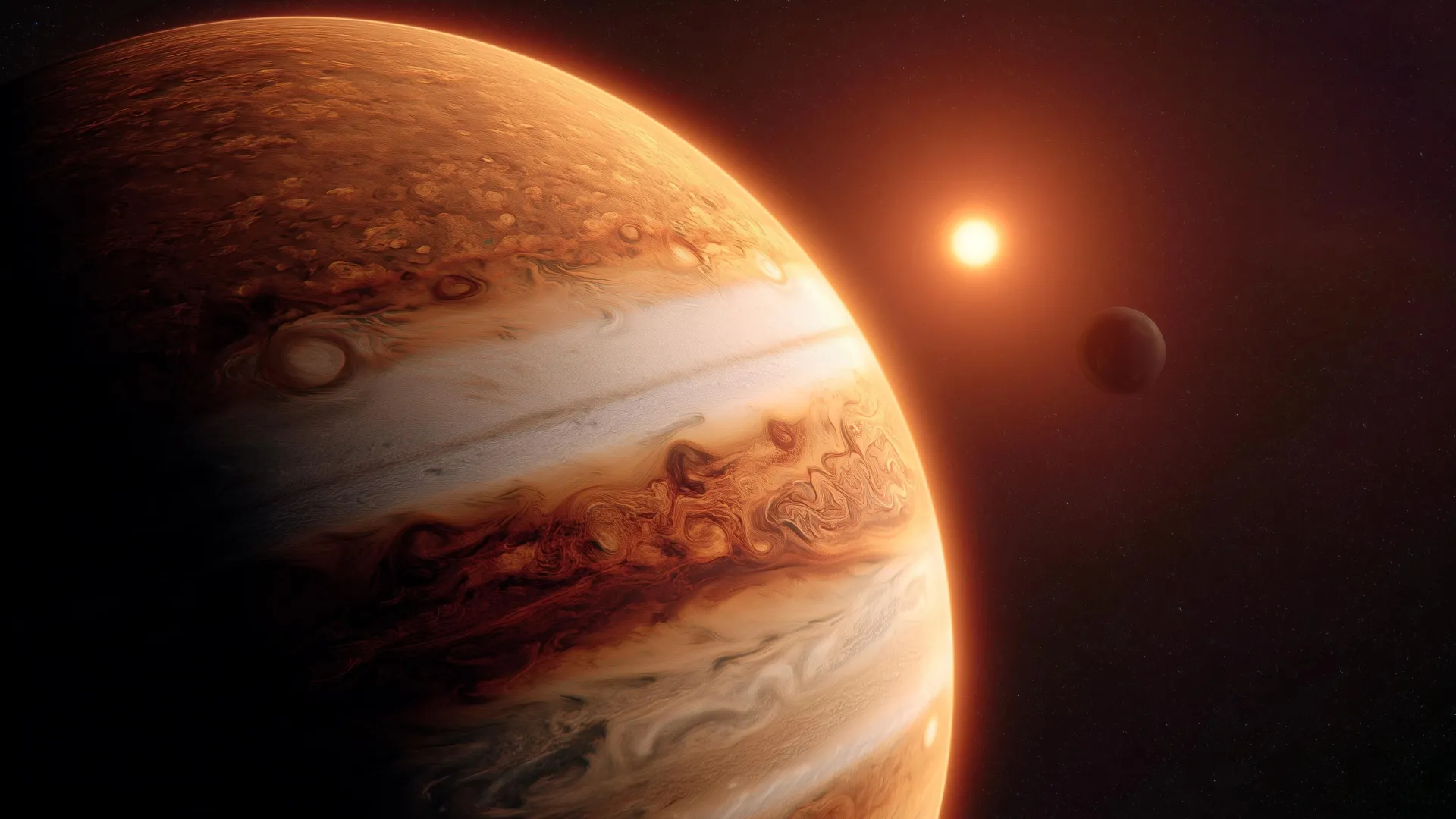These giant planets shouldn’t exist. But they do
Strange, rule-breaking planets may rewrite everything we know about how worlds form.
- Date:
- October 15, 2025
- Source:
- Northern Arizona University
- Summary:
- Astronomers are investigating a strange class of exoplanets known as eccentric warm Jupiters — massive gas giants that orbit their stars in unexpected, elongated paths. Unlike their close-orbiting “hot Jupiter” cousins, these planets seem to follow mysterious rules, aligning neatly with their stars despite their bizarre trajectories. Theories suggest that companion planets, surrounding nebulas, or even stellar waves could be shaping these odd orbits in ways never seen before.
- Share:

What do you do when you encounter a strange astronomical event, a collection of data from planets thousands of light-years away, and models that can't quite explain what you're seeing?
For one astronomer at Northern Arizona University's Department of Astronomy and Planetary Science, the answer is simple: start building better models.
With funding from the National Science Foundation and collaboration with co-investigators at Indiana University Bloomington, he is leading a three-year study on the origins of eccentric warm Jupiters -- gas giants outside our solar system that follow unusually stretched orbits.
By the time the research concludes in 2028, the team aims to develop a deeper theoretical understanding of how these unusual planets formed, and whether the same forces could have shaped our own solar system.
"The variability of extrasolar planets is just enormous," Muñoz said. "Extrasolar systems can look like our solar system, but in some cases, they look entirely different and exotic. We're very interested in seeing how the solar system forms in context by understanding systems that look like ours and ones that look completely different. We can get a sense of what the extremes are, how average our planet formation history is and how average our solar system is."
Among these extreme planetary systems, the eccentric warm Jupiters stand out as some of the most fascinating.
For years, scientists thought warm Jupiters formed in the same way as their better-known relatives, the hot Jupiters, which share similar size and mass but orbit much closer to their stars. As telescopes improved and more precise data became available, however, astronomers realized warm Jupiters might have far more complicated origins.
Unlike hot Jupiters, which can orbit their stars at almost any tilt, warm Jupiters are almost always aligned with their stars' equators. Observations also reveal that the more elongated a warm Jupiter's orbit is, the more precisely aligned it tends to be -- a surprising pattern that no current planet formation theory can explain.
To explore this mystery, the researcher is developing a new and expanding catalog of eccentric warm Jupiters using data from NASA's Transiting Exoplanet Survey Satellite (TESS). These discoveries will serve as the foundation for both updated and entirely new models that could finally reveal how these strange worlds came to be.
"The data tells us that warm Jupiters are not just the tail end of hot Jupiters," Muñoz said. "It tells us they may have a different history. We need to understand if this is just a quirk -- if these are pathological cases that happen maybe once every million cases -- or if there is an additional physical process that we have ignored in the past that we might be able to unveil."
Knowing what processes are at work during an eccentric warm Jupiter's formation could help astronomers uncover hidden truths about our solar system's evolution and the creation of countless others just like it. But before diving into the implications, Muñoz has to interrogate multiple hypotheses until he can find one that is practical and plausible.
One possibility is that these eccentric warm Jupiters have companion planets that somehow alter their orbits without misaligning them relative to their stars' equator. Having varying eccentricities and varying inclinations simultaneously is well understood from a modeling perspective, but having one and not the other is not as easily explained.
Another concerns the gaseous nebulas in which the planets and their stars formed. Muñoz reasons that these planets could have interacted with their surroundings in ways astronomers could never have anticipated as they were developing. Discoveries of this nature could permanently change the way astronomers map planet formation.
Last, and Muñoz's favorite, is the idea that the stars in these systems are responsible. Because stars are fluid bodies, they can develop internal waves that can sometimes crash and extract energy from a planet's orbit in peculiar ways. He said it's mathematically feasible that these waves could also be the reason warm Jupiters align so closely with their host stars' equators.
The answer to which theory is correct, as of now, is a mystery, but it's one Muñoz will be hard at work solving with myriad modeling techniques.
"I'm a theorist, so I work on models using heavy-duty computers, pencil-and-paper calculations and anything in between," Muñoz said. "We don't have a model that predicted this to begin with, so we're going to go crazy and dive into the most creative ways we can think about this problem. But once you have a mathematical model, that is just the beginning."
Next year, Muñoz will hire a graduate student who excels in creative puzzle solving to assist him throughout his modeling study. In the meantime, he said his research into his host star hypothesis has been promising, and he hopes to publish his findings in the near future.
Story Source:
Materials provided by Northern Arizona University. Note: Content may be edited for style and length.
Cite This Page: